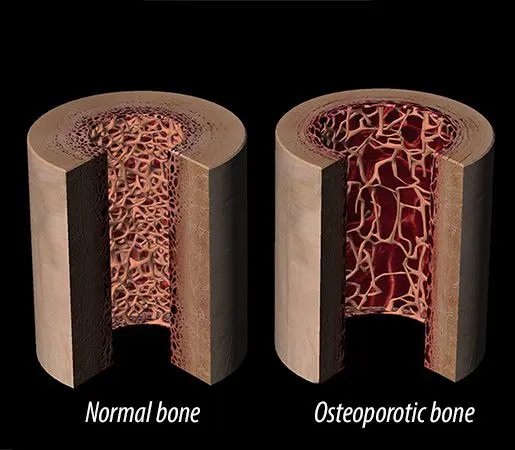Ayurvedic Treatment for Knee Osteoarthritis: Do you Really Need Joint Replacement
Ayurvedic Treatment for Knee Osteoarthritis is something that everybody wants to know. Because every time when it comes to knee osteoarthritis, surgery is the only option with doctors. We all know that total knee replacement is not a solution, at any point in time. But you are convinced to opt for Surgery and it seems a good option in comparison to the killing-pain killers. Here we will discuss the Ayurvedic Treatment for Knee Osteoarthritis along with case studies of patients who were benefited from Ayurvedic treatment.
Osteoarthritis (OA) is a chronic degenerative joint disease. This occurs when the cartilage that cushions the ends of your bones wears down over time. Because pain is usually felt where there’s damage to the cartilage. It often gets mistaken for other conditions, like bursitis or meniscal tears. In osteoarthritis, inflammation is not a major cause of joint pain and stiffness. OA affects nearly 27 million people in the U.S. About 90% of all Americans expected to develop some degree of osteoarthritis during their lifetime.
Knee Osteoarthritis
OA has been described as the “wear and tear” form of arthritis. Because it is usually more common in people over 40. The most commonly afflicted joint is the knee; by age 65, about half of all adults have evidence of knee osteoarthritis. As a result, damage to the cartilage of your knee can significantly reduce the quality of life and mobility. Though symptoms may not occur until years after the initial injury. Cartilage acts as a shock absorber between moving bones at any joint. But when this soft tissue layer wears away from being rubbed down over time. It leaves bone rubbing on bone — which leads to inflammation, pain, and stiffness in your joints.

What are the symptoms of Osteoarthritis of the knee joint?
The symptoms of knee OA vary depending upon the severity of the condition. While some people may have joint pain that limits their mobility. Others may not experience any discomfort until they’ve damaged their knees to a moderate or severe degree. If you do feel pain, it’s usually located in one specific area. Usually, the inner, outer, or medial part of your knee joint — and can be accompanied by:
- Stiffness when you wake up in the morning (or after sitting for long periods)
- Difficulty going down stairs or getting up from a seated position (but rarely affecting the ability to walk)
- Strain when bending your knee joint or walking up an incline
How is Osteoarthritis of the knee joint diagnosed ?
The symptoms of knee pain can be caused by many things besides knee OA. So a doctor will likely perform an exam and order x-rays or MRIs to rule out other conditions. Conditions that may cause similar symptoms. But even with imaging exams, it’s difficult to tell whether your pain is due to osteoarthritis until you have further tests like an MRI arthrogram or a body CT scan if used in a hospital setting.
Another way of diagnosing this condition is through X-ray and bone scans. X-rays are the primary way to reveal signs of damage but are not as accurate. So a doctor may order these tests to rule out other causes of knee pain before making a diagnosis.
If osteoarthritis is confirmed with an x-ray or MRI, the next step will be to determine the severity of any damage — which can vary in each patient.
What are the causes of knee osteoarthritis?
Most often, knee OA is the result of wear and tear over time.
As you age, your joints naturally break down. And this can become susceptible to the harmful effects of repeated stress or trauma.
In some cases, however, knee OA may be the result of an underlying medical condition. Like being overweight (which puts more stress on your knees) or having a family history of this condition.
A recent study found that those who suffer from knee OA were also at higher risk for heart disease.
Here are some of the different conditions which cause the problem. These causes are important to consider.
What role redbone marrow plays in osteoarthritis?
The discovery of this new biomarker may assist in the development of a new class of drugs to treat OA. According to the study’s authors, this is the first-ever association between marrow adiposity and OA severity within an animal model.
Interestingly, they found that not only did bone marrow fat correlate with increased cartilage degeneration. But also correlated with knee extension strength.

These findings suggest that osteoarthritis treatments will be according to individuals. Similar to the Ayurvedic approach of treatment.
In Ayurveda, we customize treatment according to each patient’s particular needs. For example, surgery or drug therapy designed specifically for those who suffer from both osteoarthritis and limited mobility
Role of kidneys in osteoarthritis?
Previous research has suggested a possible link between increasing age and the severity of OA. Elderly people with OA may be particularly vulnerable to renal disease. The progression of chronic kidney disease (CKD) in people with osteoarthritis slows down upon treatment for their knee pain.
In addition, low levels of potassium in the blood have been associated with increased severity in knee OA, while high levels may slow its progression. Research on the role that obesity plays in determining the overall risk for arthritis is ongoing.

But it’s very likely that being overweight or obese increase your chances of developing joint problems. This is especially true if you’re genetically predisposed to developing arthritis. A recent study found that this type of bone marrow adiposity is a risk factor for osteoarthritis in the knee joint.
How does Hypothyroidism cause OA?
Hypothyroidism (underactive thyroid) is a condition in which the thyroid gland does not produce enough hormones. When this happens, your metabolism slows down. It can cause some of the same symptoms as OA—including joint pain and stiffness. Hypothyroidism damages cartilage and causes inflammation associated with osteoarthritis. But it can also increase the risk for other forms of arthritis.
What role does obesity play in OA?
According to estimates by the Centers for Disease Control and Prevention (CDC), 55 percent of adults over age 20 years were overweight between 2011 and 2012 (BMI 25-29.9 kg/m2). Although they do not report rates of osteoarthritic knee problems among these adults. Obesity is a risk factor for developing OA. Because excess weight puts additional stress on a person’s joints and damages cartilage, causing inflammation.
Overweight people are more likely to have knee pain than normal-weight or underweight individuals. In addition, the prevalence of knee OA appears to be higher in women than men after adjusting for BMIs. Although the exact cause is not known. Studies suggest that overall joint loading and obesity may be related to OA severity in obese patients. Studies also show that high BMI increases the risk of complications during total joint replacement surgery. This includes perioperative mortality and postoperative infection rates, as well as the need for reoperation.
This is the reason for Ayurvedic Treatment for Knee Osteoarthritis we don’t promote or offer some oil. We work on a scientific basis. We follow the proper treatment approach.
Limitations of surgical treatment for knee osteoarthritis?
Although there is no known cure for osteoarthritis (OA), surgical treatment can help relieve symptoms and improve function. However, many people are reluctant to undergo surgery, especially those with mild OA.
For example, a 2014 review of the medical literature found that only 25% of patients who were candidates for knee replacement actually underwent surgery. 75% of surgeries were not required- in other words.
Another major concern involves determining which treatments are most effective.
Pain relief is one thing — but are you also going to achieve significant functional improvement?
Sometimes, surgeons choose to perform more than one type of hip or knee procedure at a time. Because combined surgeries may be safer and more successful in treating osteoarthritis.
Thus it becomes important to discuss Ayurvedic treatment for knee osteoarthritis.
Risk of Cancer after knee replacement surgery?
Studies have shown that patients with knee arthritis who undergo a total knee replacement (TKR) are at higher risk for certain cancers, most notably prostate cancer. However, this research has not demonstrated whether there is a cause-and-effect relationship or if both the TKR and the increased cancer risk are due to other factors such as age, gender, or family history of cancer.
According to several studies, the incidence of prostate cancer in people older than 50 years following a primary TKR was roughly double that of those without OA. A large study found that elderly men who had undergone surgery for hip or knee osteoarthritis were 25% more likely to be diagnosed with prostate cancer later on. In comparison to those not receiving OA treatment.
Odds of heart attack after knee replacement surgery?
As with the risk of cancer, there is not enough solid evidence to determine whether joint replacement surgery (arthroplasty) increases an individual’s risk for a heart attack.
There are, however, some interesting clues. A study showed that patients who have undergone total hip arthroplasty (THA), total knee arthroplasty (TKA), and partial hip replacements had higher rates of cardiovascular events. Then individuals in a control group without OA or joint problems.
Also, in one small study. Men undergoing TKR were at increased risk of developing acute myocardial infarction or stroke during the first six days following the procedure. Another one found that men who underwent hip arthroplasty were twice as likely to have a heart attack in the six months following surgery compared with those in the control group.
PAD after TKR surgery
A recent study found that osteoarthritis patients who had undergone joint replacement surgery are more likely to suffer from peripheral artery disease (PAD). The ratio is higher than people without OA. PAD is an often debilitating condition caused by blocked or narrowed arteries. Mainly due to atherosclerosis, which restricts blood flow to various organs and tissues including the legs.
Although this does not prove that joint replacement surgery causes any of these conditions. It suggests that certain precautions should follow during recovery. So you can effectively reduce your risk of developing complications after knee arthroplasty or other joint surgeries.
There are certain Myths about Ayurveda and Knee Osteoarthritis.
What does Ayurvedic Treatment for Knee Osteoarthritis
Ayurveda believes osteoarthritis is a degeneration of joints, bones, and tissues. Ayurvedic treatment for OA generally follows the same protocol as for rheumatoid arthritis. Applying both internal (herbal medicines) and external therapies (massage). Ayurveda considers obesity as the major cause of knee osteoarthritis. Thus, it requires us to reduce weight. So that overweight people can get rid of pain in the knees.
Ayurveda has also found out that such conditions as shoulder osteoarthritis. Where there is no inflammation but only tearing apart of cartilage are also curable with Ayurvedic medicines and treatments. Furthermore, according to Ayurveda, knee osteoarthritis can also occur due to a lack of muscles and body aches; hence, Ayurveda requires us to strengthen the muscles with specific ayurvedic techniques.
Ayurvedic Treatment for Knee Osteoarthritis at Sukhayu Ayurved has proved its efficiency in treating osteoarthritis. According to the results provided by various doctors of repute practicing it.
Here are a few case studies which can guide you- Do you really need a knee replacement.
Case Study of OA patient treated through Ayurvedic Treatment
As an example I am providing one case study as follows:
A 50-year old male patient suffering from left anterior lateral compartment syndrome for many years came to our clinic on December 24th, 2012 for treatment of his problem. The patient had been under treatment at various hospitals (Ayurvedic and Allopathic). However, there was no positive result. On examination, we observed that the knee was soft with lots of effusion and he had a lot of pain with restricted mobility. The patient was thin, his height was 5 feet 7 inches. His weight was just 43 kgs.
After studying the case properly, we decided to treat the patient by Ayurveda principally in order to treat this problem. He received the best ayurvedic medicines along with a proper diet and various other types of treatments like abhyanga, swedana, kizhi etc to flush out all the toxins from joints. As a result after three months there was a significant improvement in his condition; i.e. swelling reduced significantly, movement in the right knee got improved (as compared to left), there was not much pain and he was able to walk.
Know about Massaging on Joints.
Hopes: The case study of Ayurvedic Treatment for Knee Osteoarthritis
Another case: A 51-year-old female patient. She was suffering from severe osteoarthritis in both knees for over 7 years. This patient came to our Ayurveda clinic on September 12th, 2006 for treatment. She was of medium height and weighed 99 kgs. There were no joint deformities though she had limitation of movements prior to treatment due to pain. X-ray done on admission revealed bilateral osteoarthritis with narrowing at the lateral side. The pain was less after taking medicine but there was no improvement in swelling or function. She was advised “Ossium-8 and Ankylocare along with M-Forte” and medicines for 2 months.
After three months she showed significant improvement in her condition. Her pain reduced significantly, the swelling also came down to some extent (though not entirely) due to which there was no more limitation of movements. X-ray after one year revealed that her joint narrowing reduced and cartilage thickness increased with complete filling up of joint space. There is no further need for any medication or other treatment.
Success of Ayurvedic Treatment for Knee Osteoarthritis: Young OA patient
Now let me present another case study:
A 35-year old female patient suffering from severe osteoarthritis for many years visited our Ayurveda clinic on July 18 th, 2008 for treatment. Her weight was 110 kgs and height 5 feet 2 inches. She had a history of joint pains for 10 years. She used to have swelling in both the knees along with pain and limitation of movements. X-ray done on admission showed osteoarthritis with narrowing at the lateral side. On examination, there was severe pain with limitation of movements in both the knees due to which she could not even walk properly.
She received Ayurvedic medicines for a period of 8 months along with a proper diet and various other types of treatments like abhyanga (oil massage), swedana (sweating therapy), kizhi (local panchakarma), etc.
Know about External Basti for oil massage and sweating together.
By the end of the treatment period, she was able to walk good distances after taking medications and there was a significant improvement in her condition. Swelling reduced significantly, movement in right knee improved (as compared to left), pain reduced a lot which allowed her to walk better.
How Knees Were Restored to Normal with Old Age Osteoarthritis
Another case: A 66-year old female patient suffering from knee pain and valgus deformity for many years came to our Ayurveda clinic on July 4 th, 2008 for treatment. Her weight was 82 kgs and her height was 160 cm. She had a history of joint pains for 7 years. She had pain in both the knees along with inflammation and limitation of movements. Her X-ray showed osteophytes, reduced joint space, and valgus deformity of more than 10 degrees. On examination- her knees were tender with warm in touch due to inflammation.
She immediately started on Ayurvedic medications along with proper diet and various other types of treatments like abhyanga, swedana, kizhi etc. Within 4 months her condition had improved significantly; i.e. swelling had decreased significantly. Movement in right knee improved (as compared to left), there was less pain which allowed her to walk better.
She continued taking medication for 6 more months and then showed a significant improvement after one year’s treatment as well; i.e. X-ray revealed that her joint space improved. And cartilage thickness increased with complete filling up of joint space. One year after treatment, she was relieved of pain with good functional capacity. There is no further need for any medication or other treatment.
The conclusion
The above cases clearly reflect that ‘Ossium’, along with adequate dietary management including avoidance of food items aggravating the arthritic condition and use of herbal medicines like “Guduchi”, “Sariva” etc can lead to significant improvement in osteoarthritis besides improving overall health conditions and setting up an environment conducive for the healing process to take place.
These days due to professional as well personal commitments, many individuals are unable to provide proper care/attention towards themselves which naturally leads to worsening of health conditions and aggravation of other disease conditions including arthritis. In such situations, Ayurvedic medicines like “Ossium-8 and Ankylocare” can play an important role in getting good relief from symptoms and also have the potential of improving overall health.
Physicians should focus on preventive aspects along with medication management in patients suffering from arthritic conditions. They should make their patients understand the importance of proper diet, healthy lifestyle, sufficient physical activity, smoking cessation, etc which will lead to improvement in condition as well as setting up an environment conducive for the healing process to take place.















1 comment